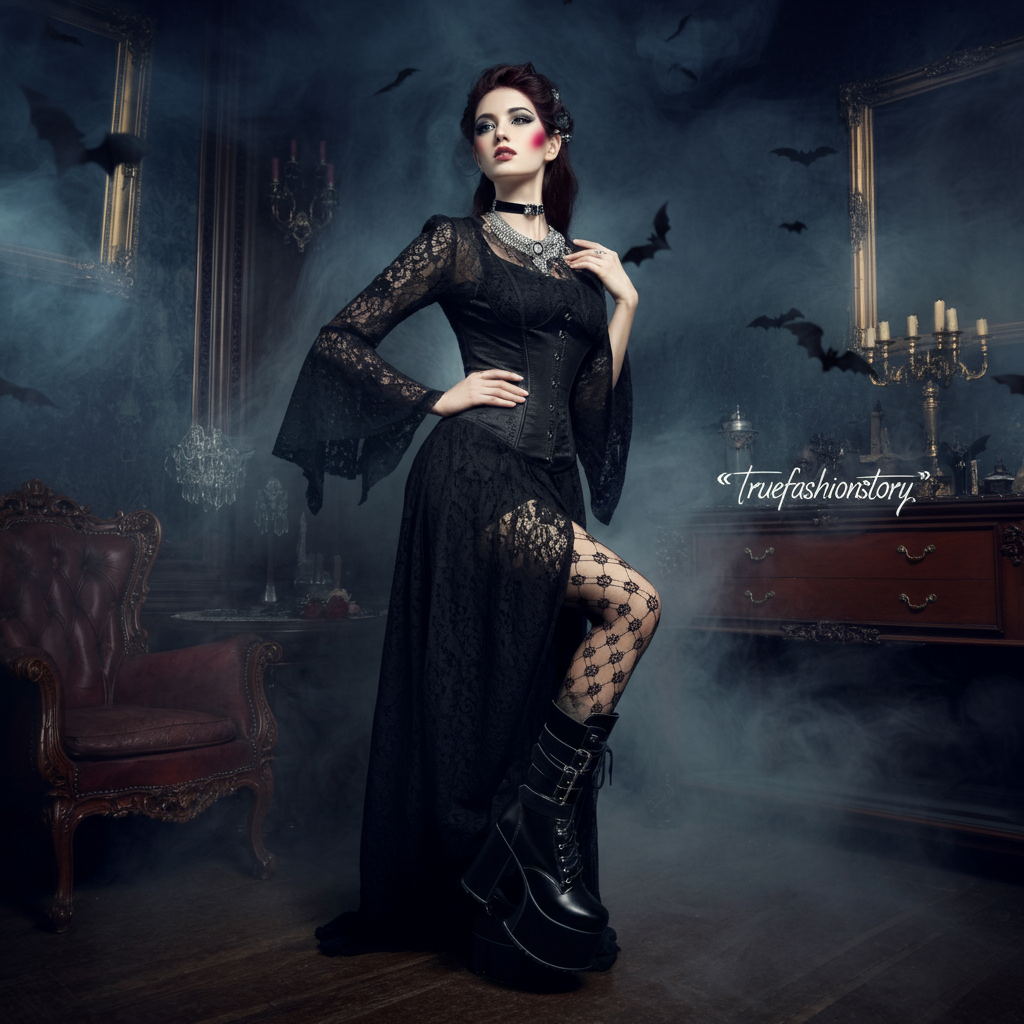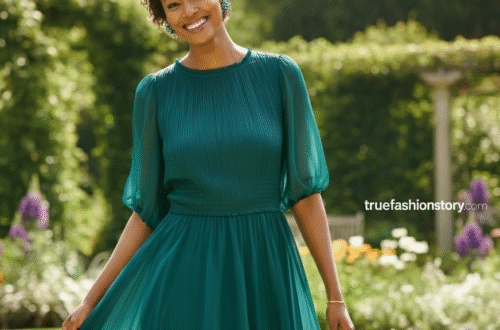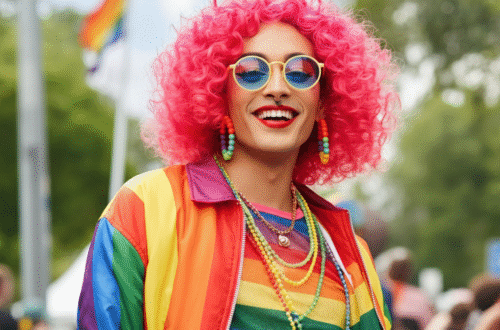Goth fashion is a style that has captivated and intrigued people for decades. It’s more than just wearing black; it’s a rich and diverse subculture with a deep history. This style is about self-expression, creativity, and embracing the beauty in darkness. Whether you’re new to the aesthetic or a long-time enthusiast, there’s always something new to discover. We’ll explore the origins, key elements, and various sub-styles that make up the world of goth fashion for women.
Key Takeaways
- Diverse Subculture: Goth is not a monolith. It includes many styles like Trad Goth, Victorian Goth, and Cyber Goth, each with unique elements.
- More Than Black: While black is the foundational color, goth fashion incorporates deep purples, burgundies, and even white to create contrast and drama.
- Expression is Key: The core of goth fashion is personal expression. It’s about crafting a look that reflects your inner self, interests, and appreciation for the aesthetic.
- Accessorizing is Crucial: Accessories like chokers, silver jewelry, platform boots, and detailed bags are essential for completing a goth look.
The Origins of Goth Fashion
Goth as a subculture emerged from the post-punk music scene in the United Kingdom in the late 1970s and early 1980s. Bands like Siouxsie and the Banshees, Bauhaus, and The Cure were pioneers, not just in music but also in style. Their dark, melancholic sound was mirrored in their fashion choices: dramatic makeup, teased hair, and dark, often ripped, clothing.
This early style, now known as Trad Goth, laid the groundwork for everything that followed. It drew inspiration from Victorian mourning attire, gothic literature characters from authors like Edgar Allan Poe, and classic horror films. The aesthetic was a deliberate rejection of the colorful, mainstream fashion of the 1980s. Instead, it offered a space for those who felt like outsiders to find community and express their individuality. This foundation is why goth fashion for women remains so powerful today; it’s rooted in a history of artistic and personal rebellion.
Core Elements of the Goth Wardrobe
Building a goth wardrobe starts with understanding its essential components. While the style is incredibly diverse, certain pieces form the backbone of the look. These items are versatile and can be mixed and matched to fit various goth sub-styles.
The Power of Black
Black is the undeniable cornerstone of goth fashion. It represents mystery, elegance, and solemnity. However, a goth wardrobe isn’t just about flat black. The key is to play with different textures and fabrics to add depth and interest. Think of combining a velvet skirt with a lace top, leather pants, and a sheer chiffon blouse. This mix of materials prevents the outfit from looking one-dimensional and adds a layer of sophistication.
Essential Clothing Pieces
- Dresses and Skirts: Long, flowing maxi dresses in black or deep jewel tones are a staple. So are shorter, edgier skater skirts or pleated mini skirts. Look for details like lace trim, corsetry, or intricate patterns.
- Tops and Corsets: Corsets and bustiers are iconic pieces that add a dramatic, historical touch. Simple black band tees, mesh tops, and elegant blouses with ruffles or bell sleeves are also essential.
- Outerwear: A classic black leather jacket is a must-have for an edgier look. For a more romantic or formal style, a long velvet or brocade coat is a perfect choice. These pieces are not just for warmth; they are statement items that define the silhouette.
Footwear: More Than Just Boots
Footwear is fundamental in completing any goth outfit. The right pair of shoes can elevate your entire look.
Platform Boots
Iconic and powerful, platform boots like those from brands such as Demonia are a hallmark of the subculture. They add height and an imposing presence, fitting for both casual and elaborate outfits.
Creepers and Winklepickers
For a more classic or trad goth look, creepers offer a punk-inspired edge. Winklepickers, pointed shoes popular in the 1980s goth scene, provide a sleeker, more androgynous silhouette that pairs well with skinny jeans or tailored trousers.
Exploring the Many Shades of Goth Fashion
Goth fashion for women is not a single, uniform style. It is a vast spectrum of sub-genres, each with its own distinct characteristics. This diversity allows for endless creativity and personal expression. As you explore the different styles, you might find one that resonates perfectly with you, or you might enjoy blending elements from several.
To learn more about how different style elements come together, you can find great visual inspiration and articles on resources like the truefashionstory.comBlog that explore various alternative aesthetics.
Trad Goth
Trad Goth, or Traditional Goth, is the original style from the 1980s. It’s heavily influenced by the post-punk music scene.
- Key Features: Think big, teased hair, pale foundation, dramatic dark eyeliner, and dark lipstick. Clothing often includes ripped fishnets, band t-shirts, leather jackets, and chunky boots. It’s raw, DIY, and unapologetically bold.
- How to Wear It: Pair a Siouxsie and the Banshees t-shirt with ripped fishnets under a black mini skirt. Add a studded leather jacket and some winklepickers or combat boots to complete the look.
Victorian Goth
This style draws inspiration from the 19th century, blending gothic romance with historical fashion. It’s elegant, dramatic, and ornate.
- Key Features: Rich fabrics like velvet, lace, and brocade are central. Corsets, long flowing skirts, high-neck blouses with ruffles, and tailored jackets are common. The look is polished and sophisticated, often evoking the somber elegance of Victorian mourning wear.
- How to Wear It: A floor-length velvet skirt paired with a white lace-trimmed blouse and a tightly laced corset creates a classic Victorian Goth silhouette. Accessorize with a cameo choker and heeled boots.
Cyber Goth
Emerging in the late 1990s, Cyber Goth fuses traditional goth elements with futuristic, industrial, and rave influences. It’s a vibrant and energetic style.
- Key Features: This look is defined by neon colors layered over a black base. Synthetic materials like PVC and rubber are popular. Hallmarks include neon hair extensions (known as falls), goggles, gas masks, and massive platform boots. The makeup is often intricate, with circuit board patterns or bright, graphic eyeliner.
- How to Wear It: Start with black pants and a top, then layer on neon green or pink accessories. Think fishnet tops, PVC harnesses, and a pair of futuristic goggles worn on the forehead.
Nu Goth
Nu Goth is a modern interpretation that blends goth with mainstream fashion trends. It’s more accessible and often incorporates elements of minimalism and streetwear.
- Key Features: This style features occult and geometric symbols, wide-brimmed hats, round sunglasses, and a more casual approach. While still predominantly black, the silhouettes are modern. Think oversized sweaters, leggings, harnesses worn over t-shirts, and platform sneakers.
- How to Wear It: Pair black leggings with an oversized sweater featuring a moon phase print. Add a wide-brimmed fedora, platform sneakers, and a silver necklace with a crystal pendant for a chic, modern goth look.
Goth Sub-Style Comparison
|
Style |
Key Elements |
Vibe |
Era of Origin |
|---|---|---|---|
|
Trad Goth |
Teased hair, band tees, fishnets, leather |
Raw, DIY, Music-centric |
Late 1970s/Early 1980s |
|
Victorian Goth |
Corsets, lace, velvet, long skirts |
Romantic, Historical, Elegant |
Mid-1980s |
|
Cyber Goth |
Neon accents, PVC, goggles, platforms |
Futuristic, Energetic, Industrial |
Late 1990s |
|
Nu Goth |
Occult symbols, hats, modern silhouettes |
Modern, Minimalist, Casual |
2010s |
Makeup and Hair: The Finishing Touches
Makeup and hair are just as important as clothing in creating a cohesive goth look. They are powerful tools for self-expression and artistry.
Iconic Goth Makeup
Goth makeup is traditionally characterized by a pale complexion, which creates a stark canvas for dark, dramatic features.
- Eyes: Black eyeliner is a must. It can be applied as a sharp cat-eye, a smudgy kohl look, or in intricate, graphic designs. Dark eyeshadows in shades of black, grey, burgundy, and purple are used to create depth.
- Lips: Dark lipstick is another staple. Classic choices include black, deep burgundy, and dark purple. A perfectly defined cupid’s bow adds a touch of vintage glamour.
- Foundation: A foundation lighter than your natural skin tone helps achieve that classic pale look. However, many modern goths embrace their natural skin tone, focusing instead on the dramatic eye and lip makeup.
Signature Hairstyles
Hairstyles in the goth scene are incredibly varied. The classic 1980s look is big, backcombed hair, often dyed jet black. However, many other styles are popular. Sleek, long black hair offers a more vampiric look, while an undercut or deathhawk provides an edgier, punk-inspired vibe. Colored hair is also common, particularly deep reds, purples, or stark white to contrast with dark clothing.
Where to Shop for Goth Fashion
Finding the right places to shop is key to building your goth wardrobe. Decades ago, finding goth clothing meant scouring thrift stores and customizing your own pieces. While DIY is still a cherished part of the culture, there are now many brands and retailers specializing in goth fashion for women.
Online retailers offer the widest selection, with specialty stores dedicated to every sub-genre imaginable. Brands like Killstar cater to a modern Nu Goth aesthetic, while others focus on Victorian or trad styles. Music festivals and local alternative markets are also fantastic places to find unique, handcrafted items from independent designers. Don’t forget to check thrift stores and vintage shops—you can often find hidden gems like velvet blazers or lace blouses that are perfect for customizing.
Conclusion: Embrace Your Inner Darkness
Goth fashion is a timeless and evolving form of self-expression. It’s a subculture built on a love for dark aesthetics, romanticism, and individuality. From the raw energy of Trad Goth to the elegant drama of Victorian Goth, there is a style for anyone drawn to the darker side of beauty.
The most important rule of goth fashion is that there are no rules. It’s about creating a look that makes you feel powerful, confident, and authentic. Use these guidelines as a starting point, but don’t be afraid to experiment, blend styles, and make the look entirely your own. Your personal style is your story, so tell it boldly.
Frequently Asked Questions (FAQ)
1. Do I have to wear all black to be goth?
No, you don’t have to wear only black. While it’s the primary color, many goths incorporate deep reds, purples, blues, and even white into their outfits to create contrast and add detail.
2. Do I have to listen to goth music to dress goth?
The goth subculture originated from the music scene, and many people in the community see the music as a core part of the identity. However, fashion is also a form of personal expression, and you can appreciate and wear the style even if you’re still exploring the music.
3. Is goth fashion expensive?
It doesn’t have to be. While some specialty brands can be pricey, you can build a fantastic goth wardrobe on a budget by thrifting, learning basic DIY skills to customize clothes, and shopping sales.
4. Can I be goth and love colors?
Absolutely! While the overall aesthetic leans dark, styles like Cyber Goth are built around bright neon colors. Pastel Goth also combines spooky elements with soft pastel colors. The subculture is diverse enough to accommodate many different tastes.
5. How can I start incorporating goth fashion into my wardrobe?
Start small. Introduce a few key pieces like a pair of combat boots, a black lace top, or some silver jewelry. Wear them with your existing clothes to see how it feels. As you get more comfortable, you can add more distinctively goth items.





